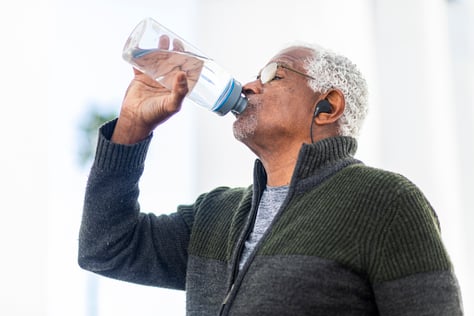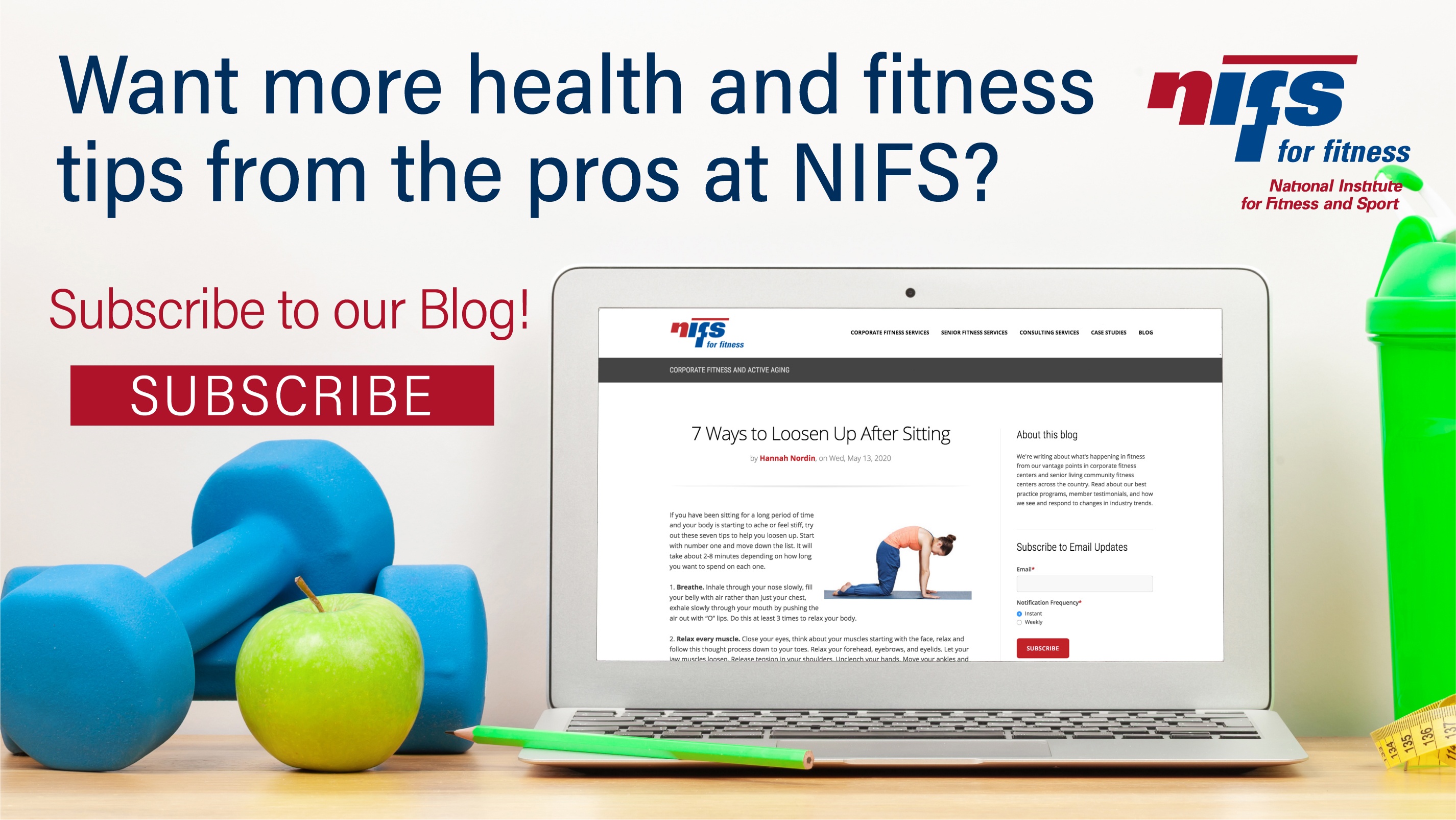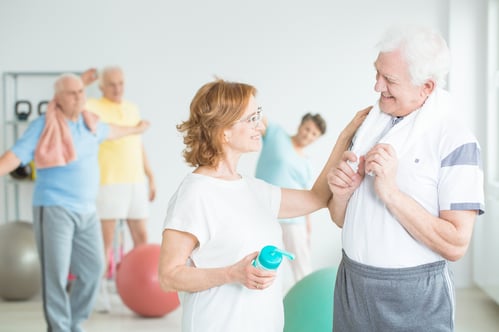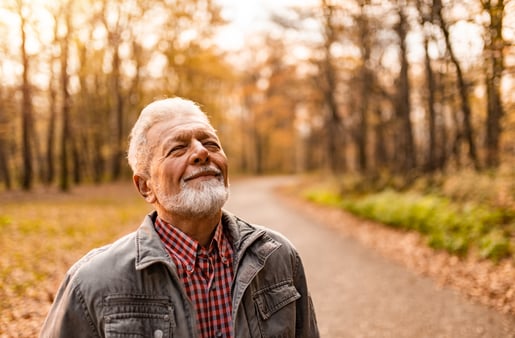The holidays should be a season filled with joy, but they can also bring stress and emotional overwhelm from busy schedules, family dynamics, and heightened expectations. Staying emotionally balanced during this time is essential for preserving your mental well-being.
Mindfulness can be a powerful tool for managing holiday stress. By staying present in the moment, you can ease anxiety and negative emotions. Even dedicating just 5–10 minutes a day to mindful breathing, meditation, or simply noticing your surroundings can help you feel more grounded and at peace. This mindset can also help when family gatherings bring the pressure to host or create the “perfect” holiday. Unrealistic expectations often lead to frustration or disappointment, so try embracing imperfection—focus on meaningful connections and remind yourself that shared moments matter far more than flawless details.
Physical activity and rest play important roles in emotional balance. Exercise not only benefits your body but also boosts endorphins—the brain’s “happy chemicals”—which can reduce symptoms of anxiety and depression (Rebar et al., 2015). Whether it’s a brisk walk, a workout, or playing a sport with loved ones, movement can help lift your mood. Likewise, getting enough sleep is crucial. A lack of rest can increase stress, irritability, and cognitive fatigue. According to the National Sleep Foundation (2020), maintaining a consistent sleep schedule and aiming for 7–9 hours each night supports both mental and physical well-being.
 Practicing gratitude and managing your time can also reduce stress. Taking time to reflect on what you’re thankful for helps redirect focus away from worry and negativity. Try keeping a gratitude journal or sharing what you appreciate with family and friends during holiday gatherings. Meanwhile, avoid overcommitting yourself. The season can fill up quickly, and saying “yes” to everything can lead to burnout. Plan your schedule thoughtfully, prioritize what matters most, and leave room for rest, self-care, and flexibility.
Practicing gratitude and managing your time can also reduce stress. Taking time to reflect on what you’re thankful for helps redirect focus away from worry and negativity. Try keeping a gratitude journal or sharing what you appreciate with family and friends during holiday gatherings. Meanwhile, avoid overcommitting yourself. The season can fill up quickly, and saying “yes” to everything can lead to burnout. Plan your schedule thoughtfully, prioritize what matters most, and leave room for rest, self-care, and flexibility.
Setting healthy boundaries and maintaining social connections are key to emotional wellness. With family obligations and social pressures at their peak, it’s important to communicate your limits to protect your mental health. Boundaries prevent burnout and help you stay centered. At the same time, positive social interactions can help counter stress. Research shows that strong relationships support mental health and resilience (Holt-Lunstad et al., 2010). Make time to connect—whether in person, over the phone, or through virtual gatherings—and reach out for support if you start feeling isolated.
Finally, remember to treat yourself with compassion. Being kind to yourself, especially during stressful moments, fosters resilience and calm. As Kristin Neff’s research (2003) shows, self-compassion reduces anxiety and helps people cope more effectively. Treat yourself with the same understanding you’d offer someone you care about. It can also help to be mindful of your social media habits. The constant stream of curated holiday moments can trigger comparison and stress, so try limiting screen time and focusing more on real-world connections (Przybylski & Weinstein, 2017).
Staying emotionally balanced during the holidays takes awareness and intention. By managing expectations, prioritizing self-care, and nurturing your relationships, you can create a more peaceful, fulfilling, and joyful holiday season for yourself and those around you.


 Improving and maintaining your balance is central to help prevent falls and avoid injury. There are many ways to enhance your current level of balance, whether it be getting your daily steps in by walking, taking weekly chair or standing yoga classes, or by strengthening your stability muscles to help keep your body standing strong. Balance is much more than simply standing on one leg. Consider this 3-step approach to improve your balance potential.
Improving and maintaining your balance is central to help prevent falls and avoid injury. There are many ways to enhance your current level of balance, whether it be getting your daily steps in by walking, taking weekly chair or standing yoga classes, or by strengthening your stability muscles to help keep your body standing strong. Balance is much more than simply standing on one leg. Consider this 3-step approach to improve your balance potential.
 Flexibility is often overlooked in fitness training, but Jabbar Harris another one of our dedicated fitness specialists knew just how powerful it could be. He led the flexibility portion of the superpowers program and guided residents through regular stretching routines designed to safely increase their range of motion, and comfort. One of his participants, Olivia Q., experienced dramatic improvements going from four inches short of her toes to reaching two inches past them - that's a 150% increase in flexibility! She shared with Jabbar that performing the stretches most days of the week not only improved her flexibility but also alleviated soreness in her lower back! Olivia's lower back discomfort went from a self reported “seven” to a “three”. Since completing the Superpowers program, Olivia has continued to incorporate stretching into her daily routine to maintain her new superpower.
Flexibility is often overlooked in fitness training, but Jabbar Harris another one of our dedicated fitness specialists knew just how powerful it could be. He led the flexibility portion of the superpowers program and guided residents through regular stretching routines designed to safely increase their range of motion, and comfort. One of his participants, Olivia Q., experienced dramatic improvements going from four inches short of her toes to reaching two inches past them - that's a 150% increase in flexibility! She shared with Jabbar that performing the stretches most days of the week not only improved her flexibility but also alleviated soreness in her lower back! Olivia's lower back discomfort went from a self reported “seven” to a “three”. Since completing the Superpowers program, Olivia has continued to incorporate stretching into her daily routine to maintain her new superpower.  Mindfulness isn’t just a way to hit pause on a busy mind; it’s a tool that helps you get out of your head and into the present moment. Not only does it improve focus and creativity, but the more mindful we are, the better we handle life's challenges.
Mindfulness isn’t just a way to hit pause on a busy mind; it’s a tool that helps you get out of your head and into the present moment. Not only does it improve focus and creativity, but the more mindful we are, the better we handle life's challenges. The heart is the engine of the human body, powering countless interactions every single day that enable us to live, thrive, and become the best versions of ourselves. While maintaining heart health might seem like a complex goal, small changes in our daily routines can make a big difference. Let’s explore three actionable tips that can help improve your heart health in safe and manageable ways!
The heart is the engine of the human body, powering countless interactions every single day that enable us to live, thrive, and become the best versions of ourselves. While maintaining heart health might seem like a complex goal, small changes in our daily routines can make a big difference. Let’s explore three actionable tips that can help improve your heart health in safe and manageable ways!
 Time is our most precious, valuable, non-renewable resource. And we’re all running out of it. B
Time is our most precious, valuable, non-renewable resource. And we’re all running out of it. B Imagine a full exercise class, residents upbeat and ready to start, a packed schedule of personal training clients, or hallway conversations about how good the residents feel after exercising. I say imagine because during the cold months, these things aren’t always a reality.
Imagine a full exercise class, residents upbeat and ready to start, a packed schedule of personal training clients, or hallway conversations about how good the residents feel after exercising. I say imagine because during the cold months, these things aren’t always a reality.
 These are both great questions and very important to the older adult population. I hear all the time that people don’t like to drink water because they will need to go the restroom more. This can be an inconvenient especially during the night but in the long term we need to make sure we stay hydrated. Proper hydration is essential in keeping multiple systems of the body functioning properly. Most people need to drink at least three liters of water per day. You can get this water from many different sources including vegetables. If you can get one liter from what you eat during the day with a fruit and vegetable rich diet, then you will only need to drink two liters.
These are both great questions and very important to the older adult population. I hear all the time that people don’t like to drink water because they will need to go the restroom more. This can be an inconvenient especially during the night but in the long term we need to make sure we stay hydrated. Proper hydration is essential in keeping multiple systems of the body functioning properly. Most people need to drink at least three liters of water per day. You can get this water from many different sources including vegetables. If you can get one liter from what you eat during the day with a fruit and vegetable rich diet, then you will only need to drink two liters.
 As we age, we are constantly looking for ways to continue living our lives to the absolute fullest. One key element to reducing the effects of aging and to warding off possible health threats is to sustain a healthy and active lifestyle!
As we age, we are constantly looking for ways to continue living our lives to the absolute fullest. One key element to reducing the effects of aging and to warding off possible health threats is to sustain a healthy and active lifestyle! Taking advantage of the benefits nature has to offer, I step outside and take a deep breath of fresh air to begin my walk. Big inhale… slow exhale, “ahhhhh…so relax…” sudden coughing interrupts… “hmm the air seems a little thick today. Not quite the relaxing deep breath I was hoping for,” I shrug it off and continue on my way. But should I simply just dismiss it? The answer is, I don’t know until I check the condition of the air quality.
Taking advantage of the benefits nature has to offer, I step outside and take a deep breath of fresh air to begin my walk. Big inhale… slow exhale, “ahhhhh…so relax…” sudden coughing interrupts… “hmm the air seems a little thick today. Not quite the relaxing deep breath I was hoping for,” I shrug it off and continue on my way. But should I simply just dismiss it? The answer is, I don’t know until I check the condition of the air quality.